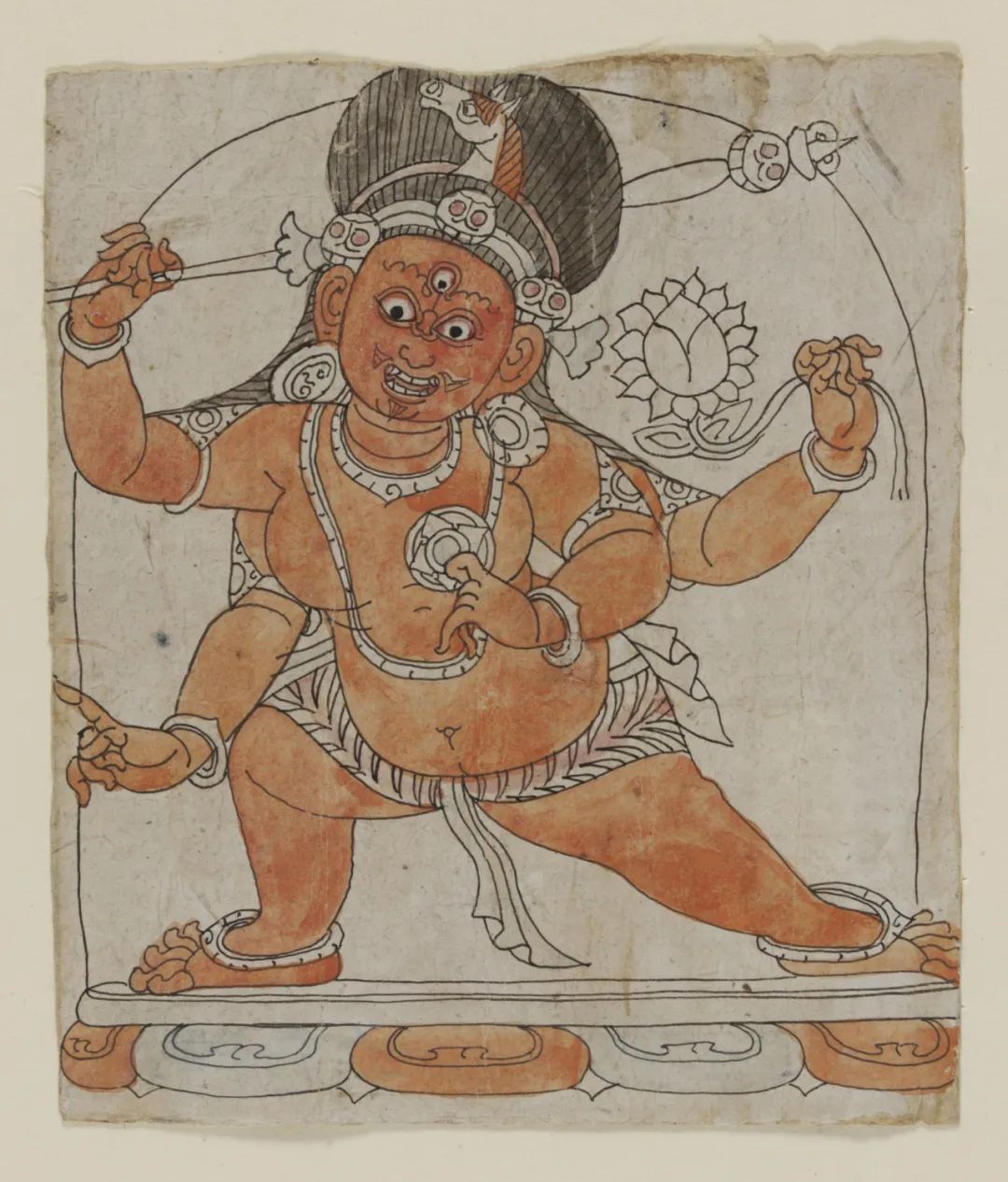
Visual Card: Zagali in Himalayan Art

The Victoria and Albert Museum in the UK

"Zagali: The First Karmapa",13th century
The Victoria and Albert Museum in the UK

The Victoria and Albert Museum in the UK
 "The Four Seals of the Mahamudra Teachings of the Kagyu Lineage Masters," 14th century
"The Four Seals of the Mahamudra Teachings of the Kagyu Lineage Masters," 14th century
The School of the Art Institute of Chicago
Within the research frameworks of art history and iconography, Tsakali is considered one of the forms of origin for flat painting in the Tibetan region. It has broader functions and more flexible drawing techniques.
After undergoing internal innovation in the "Himalayan-Tibetan" region, Tsakali gradually spread to East Asia and North Asia, where it became particularly popular.
 "The Unraveling of Guilt: The Empty Steps of the Red-faced Leopard"
"The Unraveling of Guilt: The Empty Steps of the Red-faced Leopard"
18th century, Snowcrest Archives collection
The Western maiden riding a nine-headed bird in the graveyard wild ghost
 "Yutu's Heartful Scheme: The Female Demon Lord Devours the Flesh-Eating Demon"
"Yutu's Heartful Scheme: The Female Demon Lord Devours the Flesh-Eating Demon"
18th century, Snowcrest Archives collection
In the northwest, riding a pack of nine-headed jackals, devouring all enemies with vengeance

18th century, Snowcrest Archives collection
In the southwest resides a rider on a nine-headed corpse, surrounded by dancing skeletons.

18th century, Snowcrest Archives collection
Live in the northeast, ride a nine-headed bear, destroy all those who betray their vows.
Zagali serves as an auxiliary tool in rituals and teachings, bringing wisdom and inspiration through its presentation of lines and colors. It simplifies complex concepts, shapes meanings, reveals insights, and presents and conceals them.
Zagali often bridges the gap between public affairs and personal experiences, offering a classic logic of discussing the relationship between names and phenomena in the Tibetan tradition.
It is used to depict deities and protectors for meditation and offerings, as well as for studying and expressing astrology, medicine, and divination. The secret treasures passed down through Zagali continue to enrich the Tibetan culture.

Snowcrest Archives collection

Snowcrest Archives collection

Snowcrest Archives collection

Snowcrest Archives collection

Snowcrest Archives collection

Snowcrest Archives collection

Snowcrest Archives collection

Snowcrest Archives collection
Paper, silk, canvas, leather
The creators of mandalas are not concerned with the quality of materials
or the technical and stylistic characteristics (except in special cases)
The core purpose of creating mandalas is to match the text and feelings
The formal characteristics make mandalas focus on a single concept
A set of mandalas can express a complete meaning
(like mandalas)
Place mandalas in the secret spaces of pagodas and temples
or carry them with you, or display them with wooden sticks
The past viewers have passed away, but the mandalas will continue to exist


"Offering to Heavenly Maidens in Zhagali Ensemble," 16th century, private collection

"Nepalese-style Zaghali Eight-piece Set", 14th century, private collection

"Twenty-One Paintings of Benzene Religious Themes",15th century
Tamashige Tibet Collection

"The Thirty-Nine Tibetan Ghost Themed Masks Collection",19th century, private collection

19th century,Halpert Family Collection


"Master Like a Vajra", 17th century,The Norton Simon Museum

